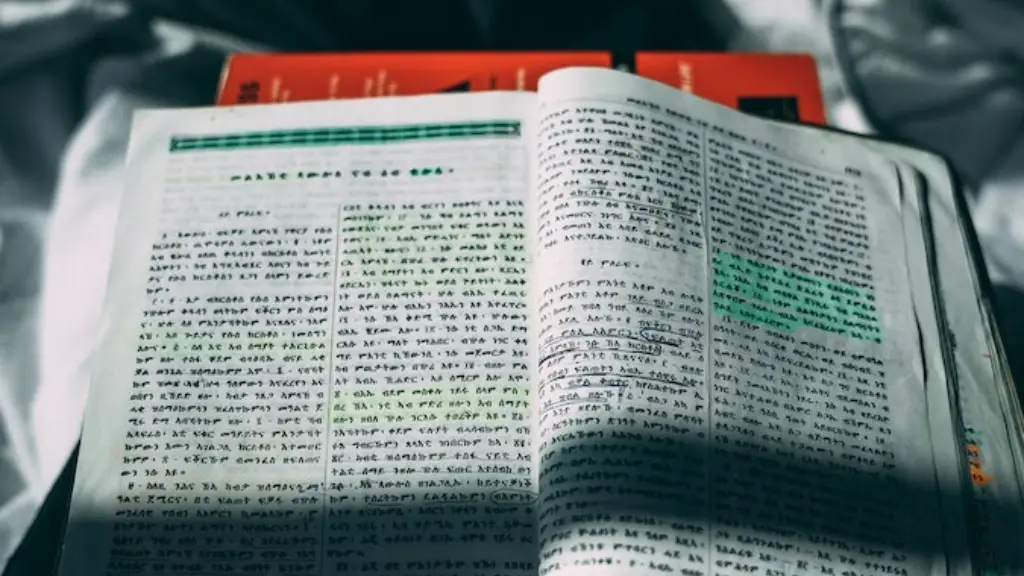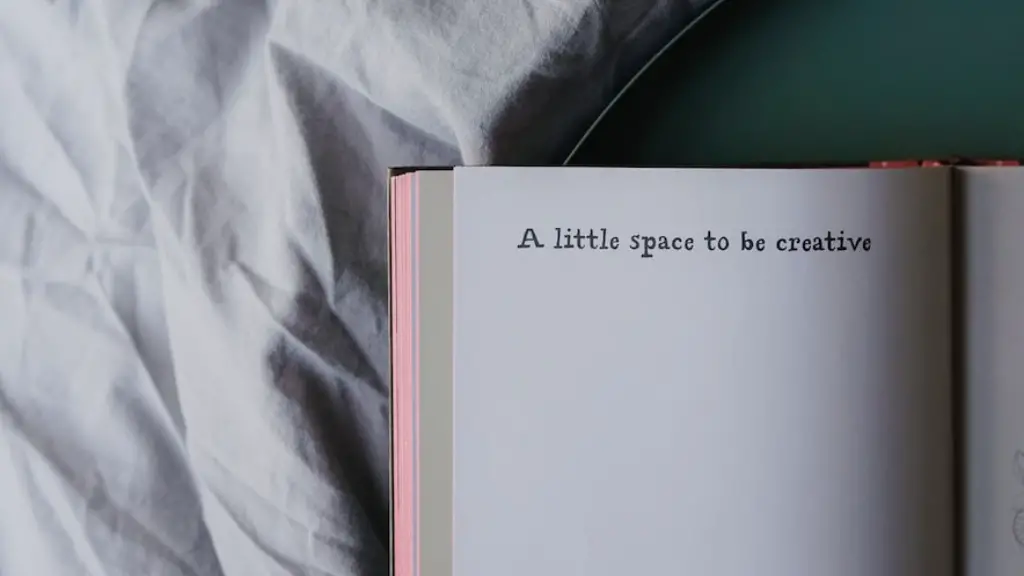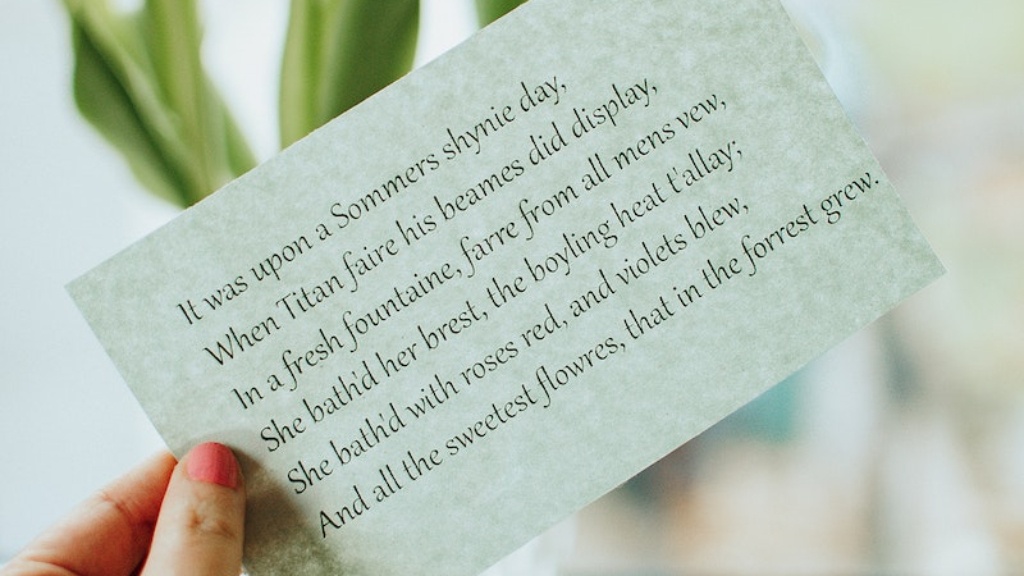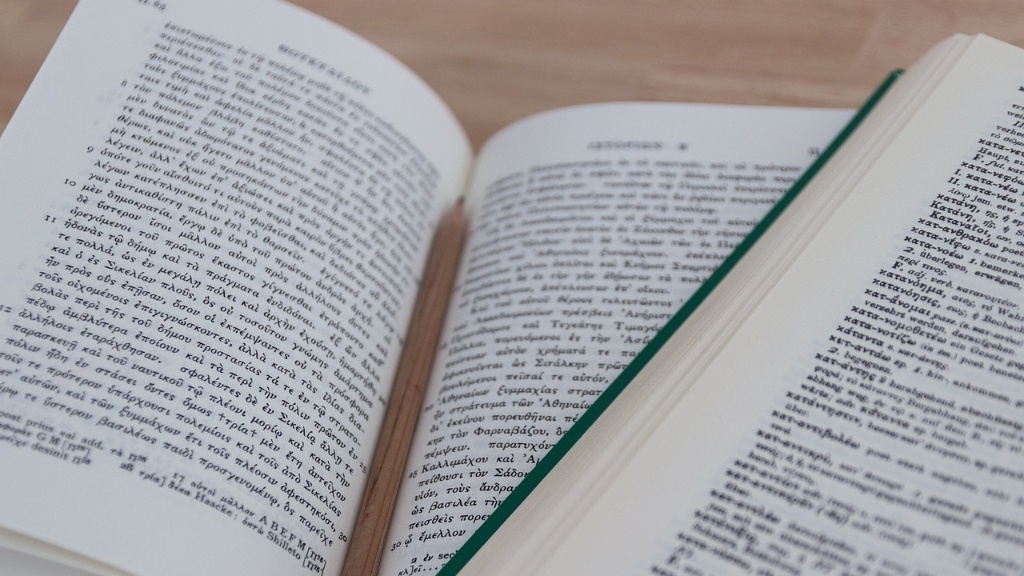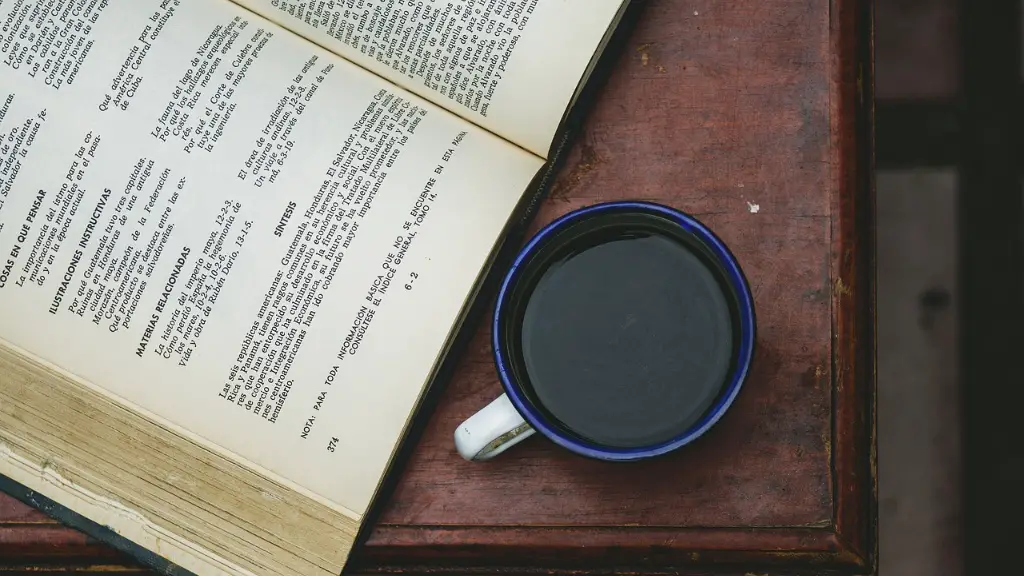In an Emily Dickinson style poem, the focus is on the inner thoughts and emotions of the speaker. The language is frequently elliptical, with abrupt changes in subject and a surprising use of colloquial expressions. Dickinson often recycled lines and stanzas from her other poems, and her poetry as a whole has a musical quality.
There is not one specific way to write an Emily Dickinson style poem. However, there are some elements that are often associated with her style of poetry. These include the use of slant rhyme, enjambment, and fragmented syntax. Additionally, Dickinson often wrote about personal, intimate topics such as love, loss, and death.
What are the unique stylistic features of Emily Dickinson’s poetry?
Dickinson’s use of dashes and capitalization is unique among poets of her time. It is not clear why she chose to use these techniques, but they add an interesting dimension to her poems.
Although Dickinson is known for her use of ambiguity in her poetry, her use of imagery, enjambment, and dashes makes her meaning even more uncertain. By using these devices, Dickinson is able to create a greater sense of ambiguity in her already ambiguous subjects.
What are the main characteristics of Emily Dickinson poetry
Emily Dickinson is considered one of America’s greatest poets. Her poems are known for their unconventional themes, varied moods, shortness and conciseness, lack of titles, and individualism. Dickinson was also influenced by transcendentalism, which is evident in her poems about nature, spirituality, and the individual. Additionally, her poems are often seen as unbiased and realistic, with a mystic or spiritual quality.
Emily Dickinson is known for her creative use of punctuation in her poetry. She often uses dashes and unconventional capitalization to create emphasis and add rhythm to her work. This unique style sets her apart from other poets and helps to create an air of mystery around her work.
What are two common themes in Dickinson’s poetry?
While it is true that Dickinson addressed literary themes common to her era, it is also true that she did so in a way that was unique to her. For example, her poems about love often explore the dark, painful side of relationships, while her poems about death focus on the speaker’s personal experience with loss. This combination of the personal and the universal is one of the things that makes Dickinson’s poetry so special.
Emily Dickinson is a unique poet with a range of different tones in her poetry. She has poems about death and suffering which are quite pessimistic and depressing, very dark and gloomy. But she also has some poems that read like tiny essays with a cognition above and beyond all other poets. This makes her an interesting and complex poet to read and study.
What was Emily Dickinson’s writing process?
Dickinson’s use of envelope paper was an intentional part of her poetic form and meaning. By opening, closing, and cutting the paper, she created a shape that added to the poem’s overall effect. The envelope paper was another way for her to experiment with her poetry and add another layer of meaning to her work.
Emily Dickinson’s poetry is interesting because it seems to straddle the genres of Romanticism and Realism. On the one hand, her poems often deal with topics like love, nature, and death, which are often associated with Romanticism. On the other hand, her poems also often deal with more mundane topics, like everyday life and work, which are often associated with Realism. This mix of genres makes her poetry unique and worth studying.
What is the aphoristic style of Emily Dickinson
Emily Dickinson’s poetic style is referred to as aphoristic because it seeks to convey its observations in short lines of a few words each. This style is what makes Dickinson’s poetry so unique for its time–much of 19th century poetry is characterized by florid descriptions of many lines and stanzas.
Dickinson’s poetry can be difficult to read at first, but there are ways to make it more accessible. First, try to stay open to the possibility of new and surprising interpretations. Second, take another look at the poem after initially reading it. This can help you to better understand its overall structure and main themes. Finally, don’t be afraid to “fill in the blanks” when it comes to Dickinson’s often cryptic syntax. With a little patience and effort, her poems can be truly rewarding reads.
What is Emily Dickinson most famous quote?
Hope is an important part of life – it’s what helps us get through tough times and keeps us going when things are tough. It’s the light at the end of the tunnel, the belief that things will get better.
Without hope, life would be incredibly difficult. Hope is what gives us the strength to keep going, even when things are tough. It’s what helps us find the courage to face our fears and overcome adversity.
Hope is an essential part of the human experience, and it’s something that we all need in our lives.
Although Emily Dickinson is often thought of as a recluse, her seclusion actually allowed her to focus on developing her poetry. Dickinson’s poems addressed a range of emotional and psychological states, including loneliness, pain, happiness, and ecstasy. She also wrote about death, often personifying it, as well as religion, morality, and love. In many ways, her poems reflected her own experience of living a largely isolated life.
What is the symbolism in Emily Dickinson poems
Dickinson uses symbols to establish the cycle of life and its different stages. For example, she uses a child to represent new life, a field of grain to represent growth and change, and a sunset to represent the end of life. She uses these symbols to create a picture of the cycle of life and death and to show how death is inevitable.
Her poems are often difficult because of their unusual compression, unconventional grammar, their strange diction and strained figures of speech, and their often generalized symbolism and allegory. All of these things can make it hard to understand what the poet is trying to say. However, these same features can also make her poetry very beautiful and interesting.
What is Dickinson’s catchphrase?
These lines are all about living life to the fullest and making the most of every moment. The first line is about making a difference in the world and helping others. The second line is about living in the present and enjoying each moment. The third line is about how life is precious and should be savored. And the fourth line is about how poetry can touch us in a deeply emotional way.
The symbols in this story represent Emily Grierson’s sad life. The rose symbolizes her lost love, her hair symbolizes her isolation, the watch ticking symbolizes her loneliness, the black color symbolizes her sadness, and her father symbolizes her strict upbringing.
The rose has long been a symbol of love, and it’s no coincidence that Emily is given a rose by one of her suitors. However, Emily never accepts any of the roses, symbolizing her rejection of love. This changes when she meets Homer, and it seems like she may finally have found true love.
Emily Dickinson’s “I Died for Beauty” is an excellent example of an allegorical poem. The speaker in the poem, who has died for beauty, interacts briefly with someone who has died for truth. Through their conversation, we are able to see the different ways that people can die, and the different things that they can die for. Beauty and truth are two important concepts that we often strive for in our lives, and this poem reminds us that there can be great sacrifices made in pursuit of these things.
Conclusion
There is no definitive answer to this question, as Emily Dickinson’s style of poetry was highly idiosyncratic and often deliberately enigmatic. However, some tips on writing in a style similar to Dickinson’s might include focusing on short, concise lines; using spare language with precision and economy; and experimenting with slant rhyme and other unusual rhyme schemes. It can also be helpful to read and study Dickinson’s poems closely, in order to get a better sense of her unique approach to language and form.
There is no one definitive answer to this question. However, there are some key elements that are typically associated with Emily Dickinson’s style of poetry. These include the use of concise language, common everyday objects as metaphors, and the focus on death and the afterlife. poems.

